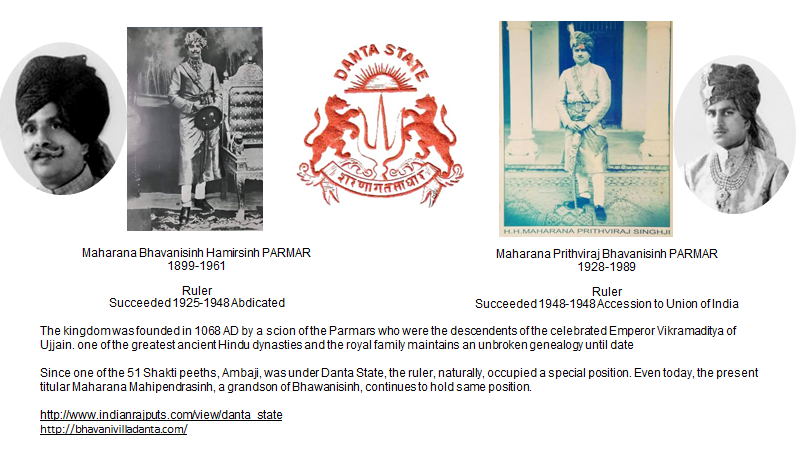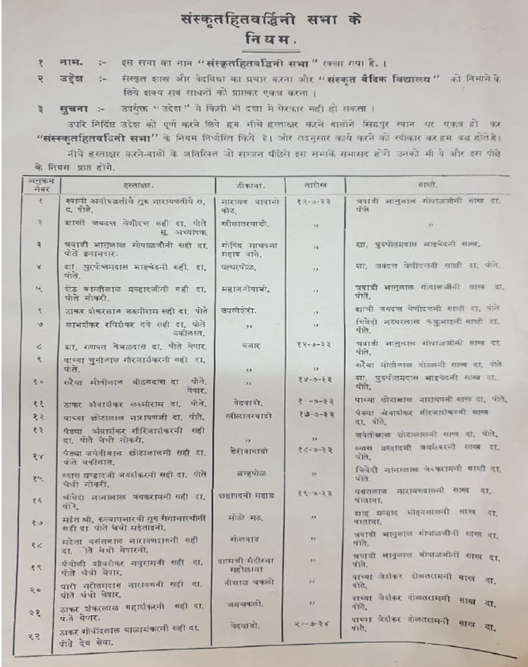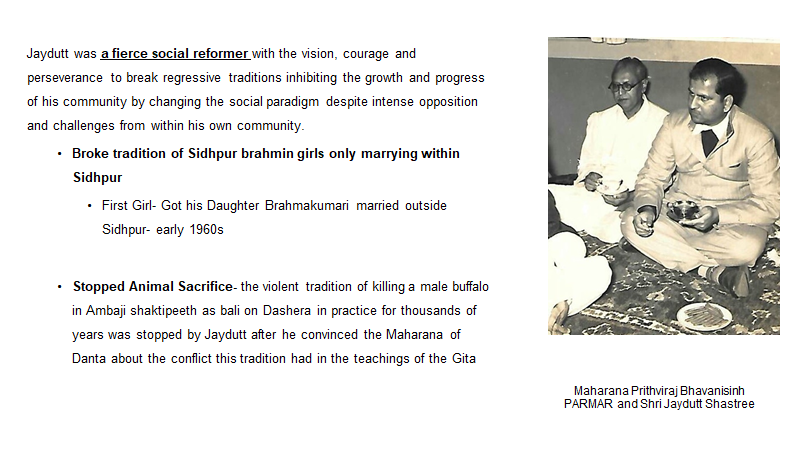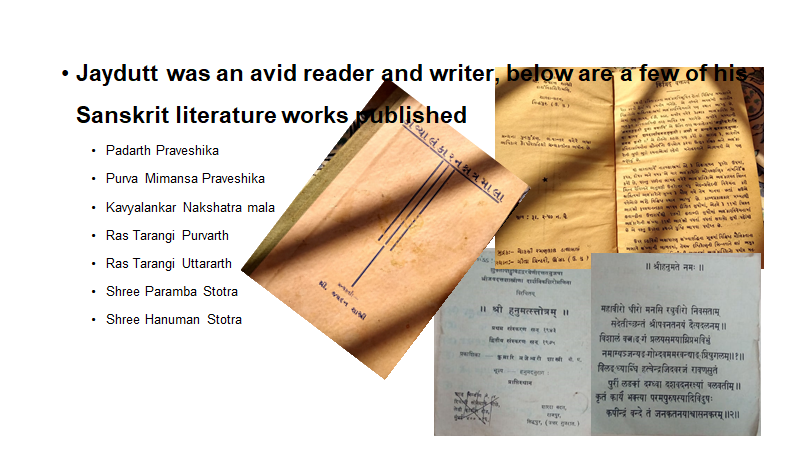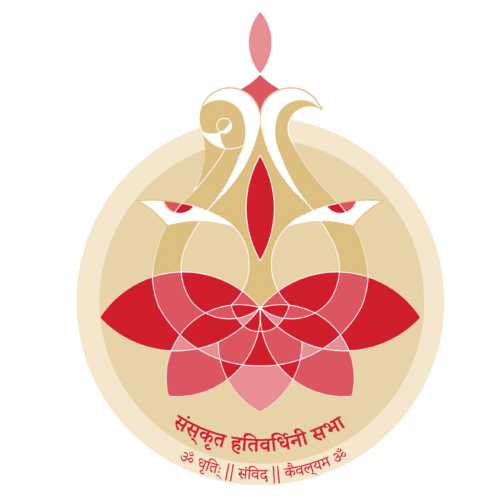
The history of the Sanskrit Hitvardhini Sabha so far, has been the life, struggle and journey of its founder Shri Jayadutt Venidutt Shastree. The essence & identity of the founder has been transformed into the identity of the institution and is now being revived over half a century after his demise by a new generation of its members
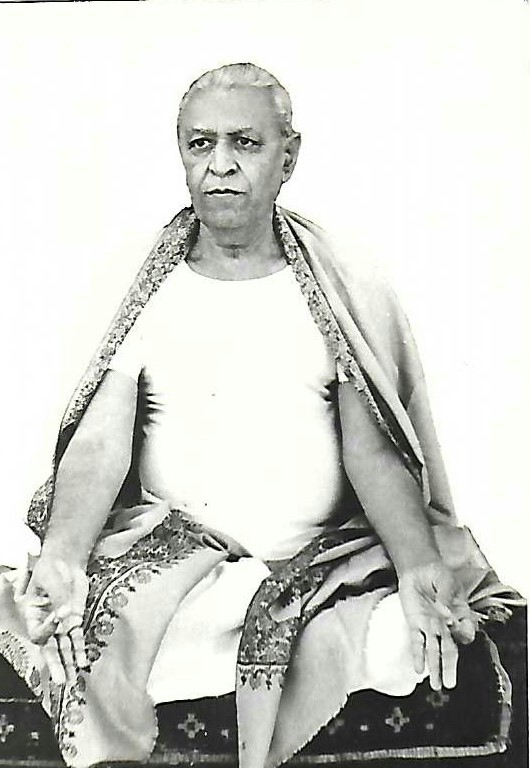
Born in 1892, Ishwar was the eldest born to Venidutt & Parvati Shukla in Sidhpur, Gujarat
Early Schooling, 1900-1907- Ishwar began learning the hereditary profession of a Karmkand priest from his father. A curious mind with strong passions and opinions, Ishwar had frequent disagreements on the meanings and logics of rituals which eventually led to him leaving home over a strong disagreement with his father.
The Revolutionary, 1907-1913– The fever of patriotism was running high in the country by 1907 due to the humanitarian catastrophe unleashed by the disastrous decision of the Bengal partition by the British Raj in 1905. Militant Nationalism advocated by the Jungantar movement founded by Aurobindo Ghosh greatly appealed to young Ishwar; at 15 years he reached Kolkata to became an active member of the movement to construct bombs and plot against various British Government officials.
Six years and several missions later the movement began to morph and fracture into many sub-groups as the British were closing in on the revolutionaries; by 1913, Ishwar had to go underground to avoid arrest. On the run from the British authorities across the breadth of the country, destiny bought him to Limdi- Saurashtra at the ashram of Jagdish Guru for sanctuary. Guruji recognized the potential in young Ishwar and enlightened him to renounce the path of violence and pursue the path of peace.
He renamed Ishwar as Jaydatta and sent him to Benares to learn Vedas and pursue the path of knowledge
The Scholar Years, 1914-1919 – Jaydatt now 22 years, studied in Benares under the tutelage of the top pandits and completed his Kavya and Kavya Tirtha exams (Graduate and Masters level respectively) from the Board of Sanskrit Exams, Sanskrit College, Kolkata; the premier Sanskrit institute.
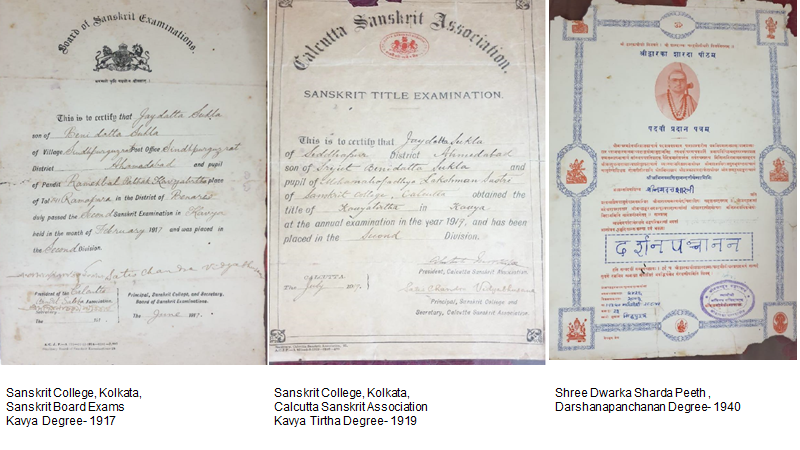
On clearing Masters, Jayadutt attained the title of Shastree- the one who knows all the shastras and was awarded the title of Shri Jaydutt Shastree.
The Struggle, 1920-1933 – Jaydatt returned to Sidhpur to teach and enlighten his people on the real meaning of the Karmkand rituals and the wider knowledge of the ancient texts. He settled in life and pursued his passion of debating and challenging scholars far and wide on the interpretations and meanings of various sanskrit texts and topics.
In one such debate at the durbar of Maharana Bhavanisinh of Danta, the ruler of a princely state in North Gujrat, Jaydutt was so clear conceptually and so highly convincing to the opposition that his knowledge shined like a beacon from a light house. The Maharana realized he had finally found his guru who would guide him the way to enlightenment.
He appointed Shri Jaydatta Shastree as his Raj Guru to seek guidance not only in spiritual ways but also in state craft and governance. In return, the Maharana agreed to be one of the early benefactors of Jaydutt’s dream of establishing a Sanskrit Vedic Patshala and the Sanskrit Hitvardhini Sabha was born.
•1933– Sanskrit Hitvardhini Sabha was established with 22 members from the Sidhpur Town Community. The sole purpose of this sabha was to promote the Sanskrit Vedic Patshala. Shri Jaydutt Shastree was appointed the lifelong principal of the Sabha
•1935-38– The Sanskrit Vedic Patshala Complex was built, this included •The Adhyan Mandir- the main teaching hall •The Mryunjay Mahadev Shiv Mandir •The Anakshetra- the granary and mess for the students and Student hostel- 4 structures in 4 corners with 4 rooms each to lodge 64 students were added to the complex.
Shri Jaydutt Shatree being the Rajguru in the Darbar of Danta, the recompense he received were adequate to fund the activities along with minor donations from the community
•1938– The Sanskrit Vedic Patshala Activities begin
•1940-The Dwarka Sharda Peeth awards Shri Jayadut Shastree the Darshanapanchanan ‘padvi
•1960s– Social Reform- broke practice of Sidhpur girls marriage within Sidhpur.
•1966– Shri Jaydutt Shastree expires at 74 years leaving no succession plan. Activities at the Sanskrit Vedic Pathshala Complex cease
